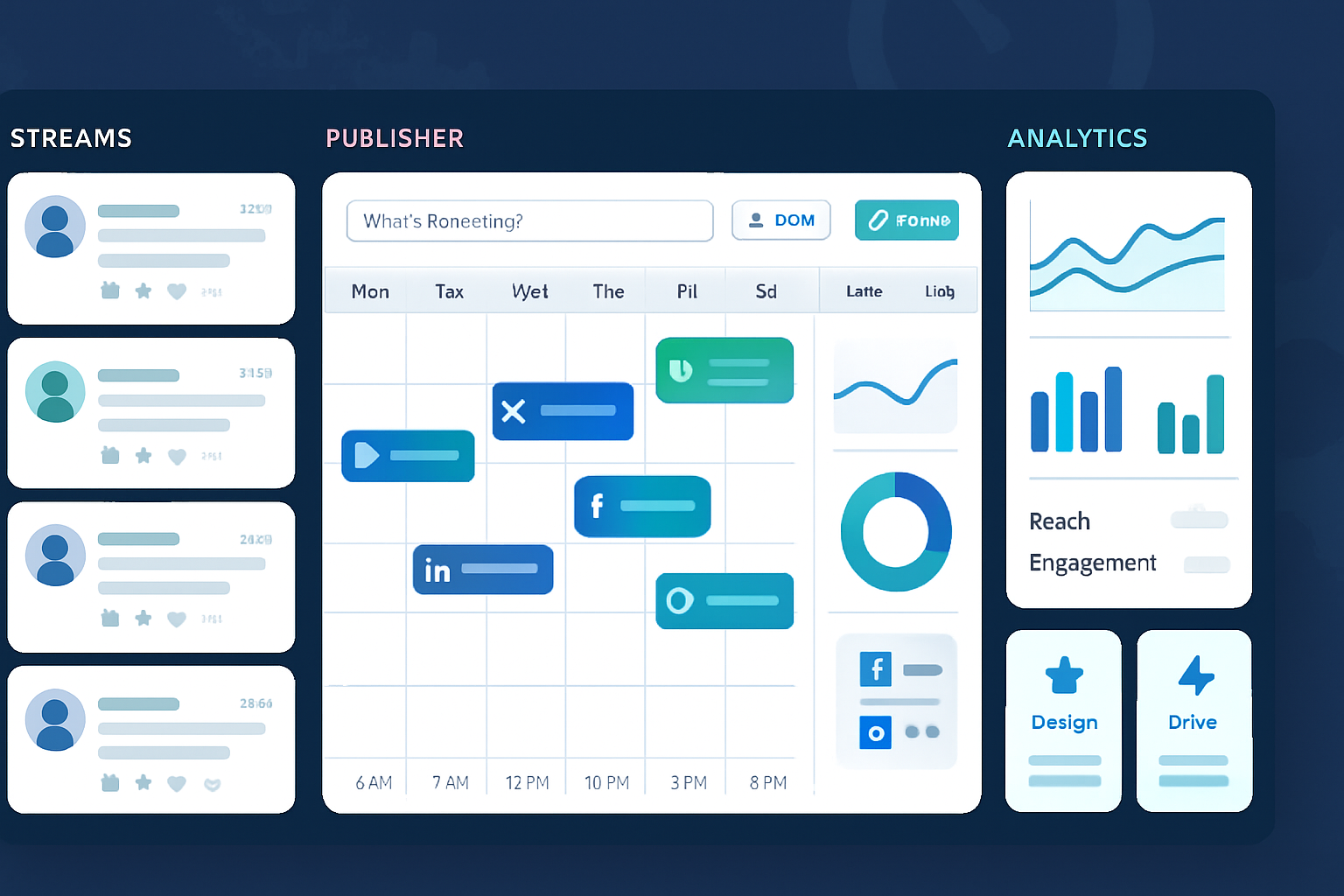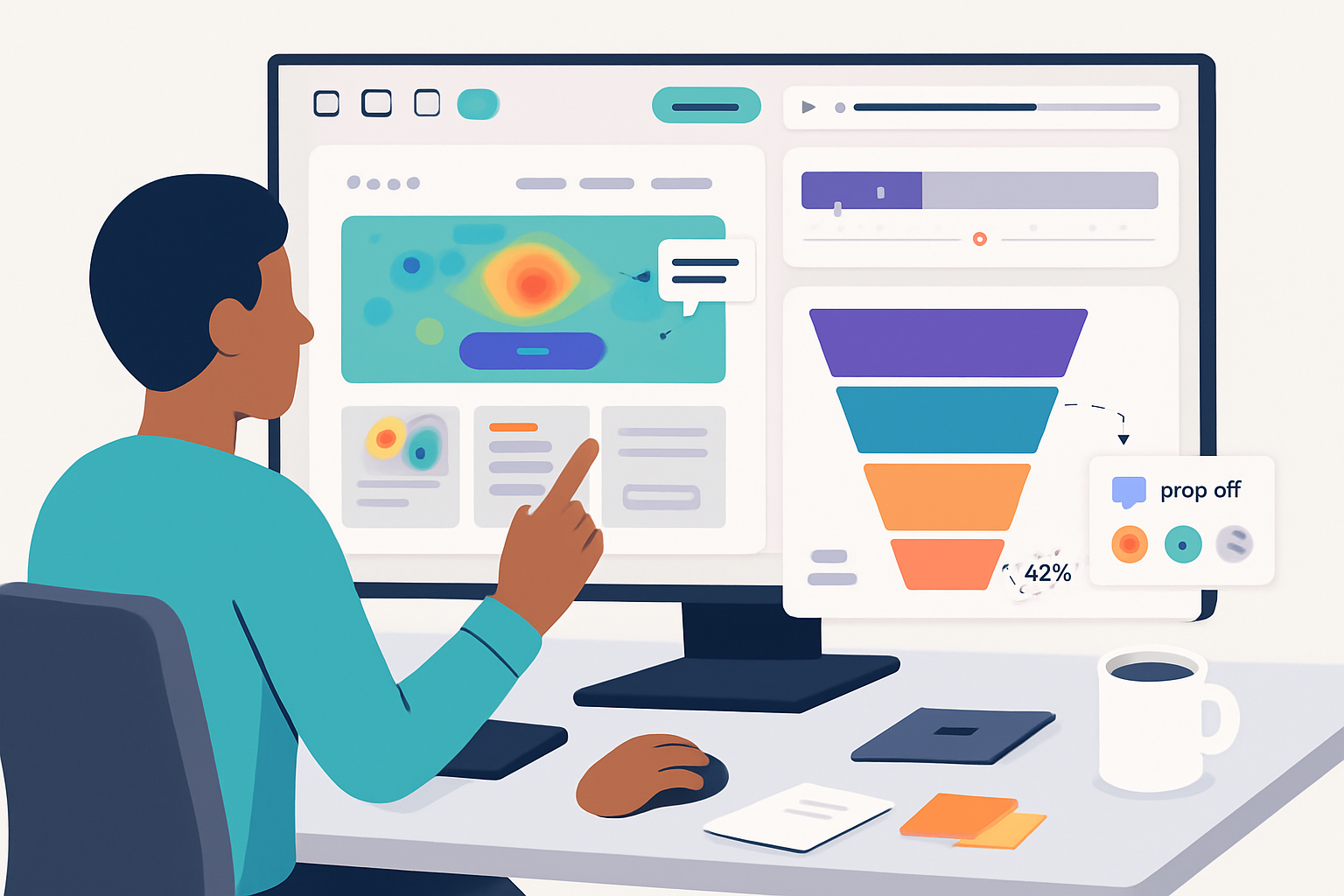· marketing · 6 min read
The Hidden Features of Hootsuite: Are You Missing Out?
Unlock the lesser-known Hootsuite tools that save time, reduce friction, and boost the impact of your social media work - from bulk uploads and content approvals to advanced analytics and app integrations.

Outcome-first: you can stop firefighting social posts and start running predictable, measurable social campaigns that scale. Read on, and you’ll learn the little-known Hootsuite features that let you do exactly that - faster, cleaner, and smarter.
Why “hidden” features matter
Big platforms show the obvious tools first: compose, schedule, report. Useful. But mastery is in the parts you don’t click every day. Minor features become major multipliers when combined into workflows. One small toggle can save hours a week. One integration can unlock new content pipelines. The payoff compounds.
Quick map: what you’ll discover
- Bulk Composer and CSV uploads - batches at scale
- Content Library + Approval workflows - consistent, brand-safe content
- Streams and advanced saved searches - listening like a pro
- Inbox, saved replies and auto-assign - tame your messages
- Ow.ly link tracking + UTM builder - get real attribution
- Custom Analytics & Report Templates - metrics that matter
- App Directory integrations (Canva, Google Drive, Zapier) - connect everything
- Automation tricks - AutoSchedule, RSS AutoPost, and keyboard shortcuts
1) Bulk Composer: publish hundreds of posts in minutes
What it does: upload a CSV to create many scheduled posts at once. Ideal for multi-platform campaigns, event promos, or evergreen content rotation.
How to use it (practical steps):
- Create a CSV with columns like - date, time, profile, message, link, image_url.
- In Hootsuite, go to Publisher → Bulk Composer (or upload CSV in Composer when available).
- Map your CSV columns to Hootsuite fields and preview imports.
- Schedule, correct, and confirm.
Sample CSV row (comma-separated):
2025-06-15,09:00,Twitter,@brand Launching our new guide: 10 growth hacks https://example.com/guide,https://example.com/image.jpgWhy it’s a secret weapon: bulk uploads eliminate repetitive manual scheduling and make content audits easier - you can edit one source file and re-upload.
(See Hootsuite help for Bulk Composer basics: https://help.hootsuite.com/)
2) Content Library + Approvals: keep the brand safe and predictable
What it does: centralizes approved assets, captions, and templates. Combine with approvals so nothing posts without a sign-off.
How to use it:
- Create folders for campaigns, evergreen assets, or client accounts.
- Save post templates with placeholders for links or variables.
- Require approval for posts from certain team members before scheduling.
Benefits: governance at scale. No last-minute brand mismatches. Less back-and-forth in chat.
3) Streams & Advanced Searches: don’t just monitor - find opportunity
What it does: Streams let you monitor keywords, hashtags, mentions, and lists across networks in real time.
Pro tips:
- Use saved searches to track competitor activity, campaign hashtags, or crisis-related keywords.
- Combine negative terms to filter noise (e.g., “brand -job -hiring”).
- Create a stream for question keywords and set quick-reply templates for fast engagement.
Why it matters: listening surfaces opportunities for engagement, partnership, and customer service.
4) Inbox, Saved Replies, Labels and Auto-Assign: scale social customer care
What it does: centralizes incoming DMs, comments, and mentions with tools to speed replies and route conversations.
How teams use it:
- Saved replies - pre-written answers for FAQs to cut response time.
- Labels/tags - categorize messages (billing, tech issue, praise).
- Auto-assign - route messages to specialists or regional teams automatically.
Result: faster SLAs, fewer dropped messages, better handoffs.
5) Ow.ly link shortener + UTM builder: stop guessing ROI
What it does: shortens links and records clicks for reporting. Hootsuite also offers a UTM builder in Composer to add campaign tracking automatically.
Tactics:
- Always add UTMs to campaign links for clear channel attribution.
- Use Ow.ly to track click trends in Hootsuite analytics.
You’ll stop saying “I think that worked” and start saying “This post drove X visits and Y conversions.” (Better for reports and budgets.)
6) Custom Analytics, Templates, and Scheduled Reports
What it does: create tailored reports that combine metrics across profiles. Schedule exports and white-label them for stakeholders.
Advanced uses:
- Build KPI-focused dashboards - reach, engagement rate, conversion events.
- Compare campaigns with side-by-side charts rather than scrolling timelines.
- Automate weekly or monthly PDFs for leadership.
Pro tip: save report templates for recurring campaigns to cut report prep time by 80%.
(Official analytics overview: https://hootsuite.com/products/analytics)
7) App Directory: integrate to extend Hootsuite’s reach
What it does: plug in third-party apps like Canva, Google Drive, Dropbox, Zendesk, or Zapier to create content and automate downstream workflows.
Practical examples:
- Canva - design social visuals inside Hootsuite and drop them into posts.
- Google Drive / Dropbox - pull approved assets directly from shared folders.
- Zapier - trigger Hootsuite posts from events in your CRM or CMS.
Integrations turn Hootsuite from a scheduler into a central orchestration hub. (Explore apps: https://hootsuite.com/apps)
8) Smart Automation: AutoSchedule, RSS AutoPost and Shortcuts
AutoSchedule: let Hootsuite pick high-engagement times for posts if you don’t want to micro-manage timing.
RSS AutoPost: connect a blog or news feed and automatically share new content with filters to avoid noise.
Keyboard shortcuts: master a few to shave minutes off daily workflows (compose, schedule, navigate streams).
Caveat: automation is a force-multiplier only when combined with monitoring. Always keep an eye on live streams and the Inbox.
9) Team Roles, Permissions and Approval Chains
What it does: control who can post, approve, or edit content. Essential for agencies and large brands.
Setup advice:
- Define roles by responsibility, not job title.
- Use approval requirements for external-facing content.
- Audit permissions quarterly as people change roles.
10) Workflow Examples - put features together
Campaign launch (small team):
- Draft assets in Canva (App Directory) → save to Content Library.
- Build the campaign CSV and import via Bulk Composer.
- Add UTMs with Composer’s UTM builder and enable Ow.ly.
- Require one approver to sign off in the Content Library.
- Use Streams to monitor campaign hashtag and Inbox to handle replies.
- Generate a custom analytics report after week 1 and week 4.
Customer support funnel (support team):
- RSS and Streams for product forums → Saved searches for product name + “help”.
- Inbox auto-assign to Level 1 or Level 2 support.
- Saved replies for quick triage; escalate to ticketing app (Zendesk) via App Directory.
Quick wins you can implement in 30 minutes
- Enable AutoSchedule for low-priority evergreen posts.
- Create 5 Saved Replies for frequent customer questions.
- Build one campaign CSV and test bulk upload with 10 posts.
- Add UTMs to one evergreen link and watch clicks via Ow.ly.
When should you consider upgrading?
If you need:
- Bulk composer, advanced analytics, or bigger Content Library storage
- Team permissions and approval workflows
- Social listening across more networks and deeper historic data
Then the paid plans become more cost-effective. For many teams, the lift in efficiency pays for itself.
Resources and further reading
- Hootsuite Help Center: https://help.hootsuite.com/
- Hootsuite Features & Products: https://www.hootsuite.com/products
- Hootsuite App Directory: https://hootsuite.com/apps
Final takeaway
Hootsuite’s value isn’t only in scheduling posts. It’s in the small built-in tools that reduce friction, keep brand voice consistent, and turn social activity into measurable results. Master the hidden features - bulk uploads, content governance, smart integrations, and custom analytics - and you’ll transform social media from a time sink into a predictable, revenue-connected channel.
Start with one feature. Repeat. Scale confidently.



